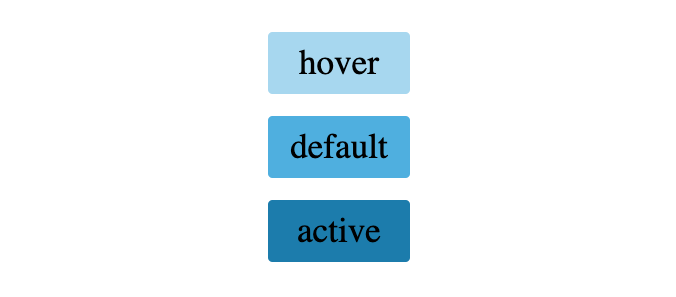What is HSL color format in CSS and how to use it
CSS has a lot of color formats. How many color formats do you know? Everyone knows about RGB and HEX, but there are more. One of them is HSL.
It is a color format that is used by CSS pros. It is not as popular as RGB and hex, but it is worth learning. In this article, we will learn what HSL color is and how to use it.
HSL is a function that is used to set the color of an element in CSS. It is a very useful function that allows us to set the color of an element using only three values: Hue, Saturation, and Lightness. Below you will see each of them in detail:
Hue
Hue is the color itself. It is represented in a color wheel in which hue can be set using numerical value that ranges from 0 to 360.
In this wheel, red is at position 0°, yellow is at position 60°, green is at position 120°, cyan is at position 180°, blue is at position 240°, and magenta is at position 300°. All other colors are somewhere in between.

Here is the CSS code for the primary and secondary colors:
.red {
background-color: hsl(0deg 100% 50%);
}
.yellow {
background-color: hsl(60deg 100% 50%);
}
.green {
background-color: hsl(120deg 100% 50%);
}
.cyan {
background-color: hsl(180deg 100% 50%);
}
.blue {
background-color: hsl(240deg 100% 50%);
}
.magenta {
background-color: hsl(300deg 100% 50%);
}.red {
background-color: hsl(0deg 100% 50%);
}
.yellow {
background-color: hsl(60deg 100% 50%);
}
.green {
background-color: hsl(120deg 100% 50%);
}
.cyan {
background-color: hsl(180deg 100% 50%);
}
.blue {
background-color: hsl(240deg 100% 50%);
}
.magenta {
background-color: hsl(300deg 100% 50%);
}Saturation
Saturation refers to the intensity of color and is represented in percentage, where 0% is a colorless grey and 100% is the most intense color.
A saturation of 50% is considered as a midpoint. If the saturation is 100%, the color will be very vibrant, while the saturation is 0%, the color will be completely grey.
The following images show the same color with different saturation values (45% and 100%):


Lightness
Luminosity refers to the amount of light that is reflected in the color and is also represented in percentage, where 0% is black and 100% is white.
A luminosity of 50% is considered as midpoint. If the luminosity is 100%, the color will be completely white, while the luminosity is 0%, the color will be completely black.
The following images show the same color with different lightness values (10% and 90%):


Conclusions
The HSL format in CSS is an easy and efficient way to represent colors in our projects. With only three values, we can set any color we need.
In addition, this format allows us to easily manipulate the saturation and lightness of a color to create different effects and shades.
Advantages of HSL color format
The HSL color format in CSS has several advantages that make it popular among design and web development professionals:
- Easy to understand and use: the
HSLformat is very intuitive and easy to learn, making it ideal for beginners. - Allows for greater color control: unlike other color formats,
HSLallows us to adjust the saturation and luminosity of a color without affecting the hue. - Greater flexibility:
HSLallows us to create a wide range of shades and hues using just three numeric values, making it more flexible than other formats. - Compatible with other tools:
HSLis compatible with many design and web development tools, making it easy to integrate into any workflow.
Practical example
Let's take a look at a following example of how we can use the HSL color format in CSS to create a button that changes color based on it's state, just by adjusting the saturation or lightness levels.
.button {
background-color: hsl(200, 70%, 60%);
}
.button:hover {
background-color: hsl(200, 70%, 80%);
}
.button:active {
background-color: hsl(200, 70%, 40%);
}.button {
background-color: hsl(200, 70%, 60%);
}
.button:hover {
background-color: hsl(200, 70%, 80%);
}
.button:active {
background-color: hsl(200, 70%, 40%);
}
In this example, we've used the HSL color format to set the background color of the button to a brighter blue hue (200 degrees on the color wheel), with a saturation level of 70% and a lightness level of 50%.
When the user hovers over the button, the saturation increases to 80% creating a brighter and more vibrant shade of blue.
When the user clicks on the button, the lightness decreases to 40%, creating a darker and more subdued shade of blue.
By using the HSL color format and adjusting the saturation and lightness levels, we were able to create a button that changes color based on it's state, making it more interactive and engaging for users.
Written by


